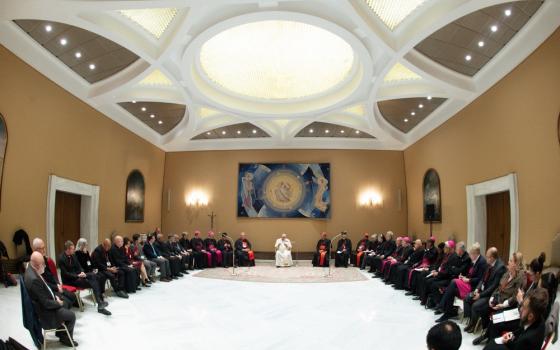A gold cross ripped from the altar of a mountain church. Two 18th-century carved and gilded wooden cherubs. An entire tabernacle hacked from a wall. These are just a few of the objects stolen from Italian churches in the first three months of 2014.
As a treasury of art and archeology, Italy tops UNESCO's World Heritage listing, with 49 officially recognized sites. Mosaics, illuminated medieval manuscripts and Renaissance and Baroque paintings and statues have found their way from Italy into museums and private collections around the world.
Such riches make the country especially tempting for looters. And because museums are more closely guarded than in the past, churches have become targets of a growing share of art crimes, accounting for over half of all such thefts during the first eight months of 2013.
An especially notorious case remains: that of a 24-inch-tall statuette of Baby Jesus, carved from the wood of an olive tree from Gethsemane by a Franciscan friar in the 15th century and traditionally kept in Rome's ancient Basilica of Santa Maria in Aracoeli.
Known affectionately as the "Bambinello" (the little baby), the statuette was the centerpiece of the church's Christmas manger scene. The Bambinello would occasionally leave the church, borne in its personal carriage, to the homes of the deathly ill. The statuette was stolen in 1994 and has never been recovered.
The good news is that, despite the comparative upsurge, church thefts have fallen sharply in absolute terms. The 1,115 objects stolen from Italian churches in the first eight months of 2013 represented a decline of one-third over the same period the previous year.
"Dear friend, listen to your conscience," Fr. Bruno Antonellis said shortly after Christmas, publicly appealing for the return of antique cult objects taken from his parish church in the town of Sora, about 75 miles southeast of Rome. "The church is always open. You should find a way to give back anonymously what you have taken. I don't want to call you a thief."
Those objects have not yet been returned to Sora, but the overall recovery rate for stolen church property has vastly improved in recent years, owing to tighter controls on auction houses, galleries and art fairs, and to more international cooperation. Most importantly, a databank compiled by Italy's Carabinieri military police lists 5 million objects, some missing for decades, and features 450,000 images that can be compared with items offered for sale.
In November, Carabinieri recovered an "Adoration of Baby Jesus" attributed to a student of the 15th-century master Filippo Lippi. The painting, in tempera on wood, had been stolen in 1970 from the ancient Collegiata of Santa Maria Assunta church at Castell'Arquato in the northern region of Reggio-Emilia.
Such masterpieces have become increasingly hard to market, so less easily identified objects such as candelabra and chalices have become more popular as loot. In pawn shops in a single Tuscan town, Forte dei Marmi, Carabinieri investigators recently recovered some 50 pounds of items stolen from churches and sold by weight.
Some thieves may have more sinister incentives than making money. When chalices and other objects, including ciboria containing consecrated hosts, were taken from five churches in the northwestern city of Turin, Archbishop Cesare Nosiglia warned of the possible involvement of Satanic cults.
Thieves don't always appreciate the real value of what they take. The culprits in Turin "probably think the ciboria are made of gold and silver," Nosiglia said. "Well, they are wrong."
In January, three youths broke into a tiny church in the mountain town of San Pietro della Ienca, about 85 miles northeast of Rome, and stole a reliquary containing a postage-stamp-sized piece of cloth stained with the blood of Blessed John Paul II, shed the day a would-be assassin shot him in 1981.
Fifty Carabinieri were assigned to find the missing items. Once arrested, the trio confessed, and all was recovered. It turned out the thieves had thrown away the relic -- which was recovered -- but kept its simple iron container.
In Palermo, Sicily, thieves broke into a chapel 44 years ago and made off with a large Nativity painted by Michelangelo Caravaggio in 1608. A Mafia underling who turned state's evidence claimed it had been placed against a wall as a backdrop at meetings of the "Cupola," the Sicilian Mafia's highest council. The painting was then hidden in a stable, he said, where it was eaten by pigs and rats before its remnants were burned. But the FBI still lists the painting among the top 10 missing works of art.
To help reduce the number of such thefts, the Carabinieri's heritage protection squad has published a 48-page manual advising parish priests and heads of other religious institutions on how to protect their premises and property.
The manual begins with an admonition to make a careful inventory of what is owned. Each object should be measured, accurately described and photographed, noting particulars of damage or repair.
The next suggestion is to analyze risk: "Ask what can be the most appetizing objects and the coefficient of the difficulties of stealing them."
Windows should be kept locked and equipped with security devices; except during religious services, only one entry way should be open. And at the busiest churches, the ones that draw flocks of tourists, volunteers should serve as "guardian angels" looking over the precious patrimony.



